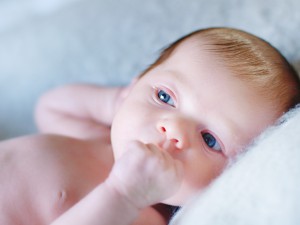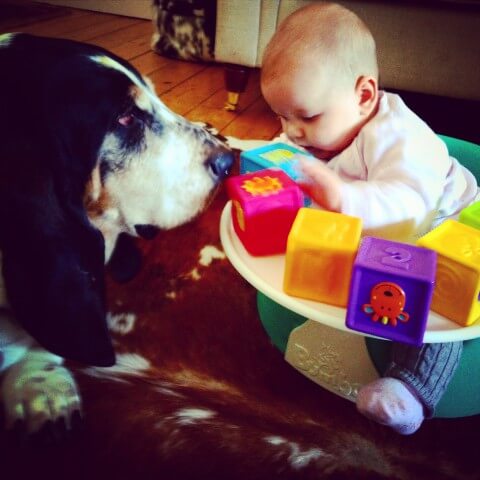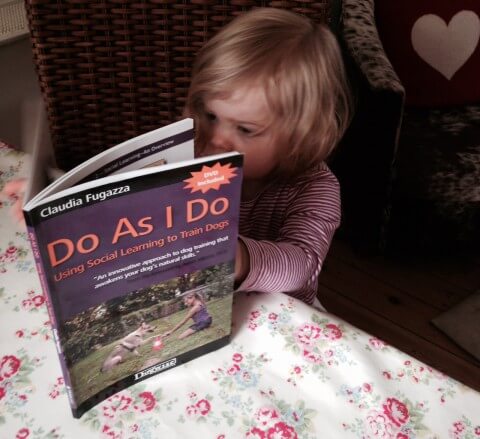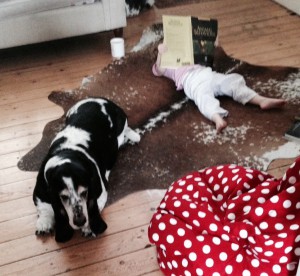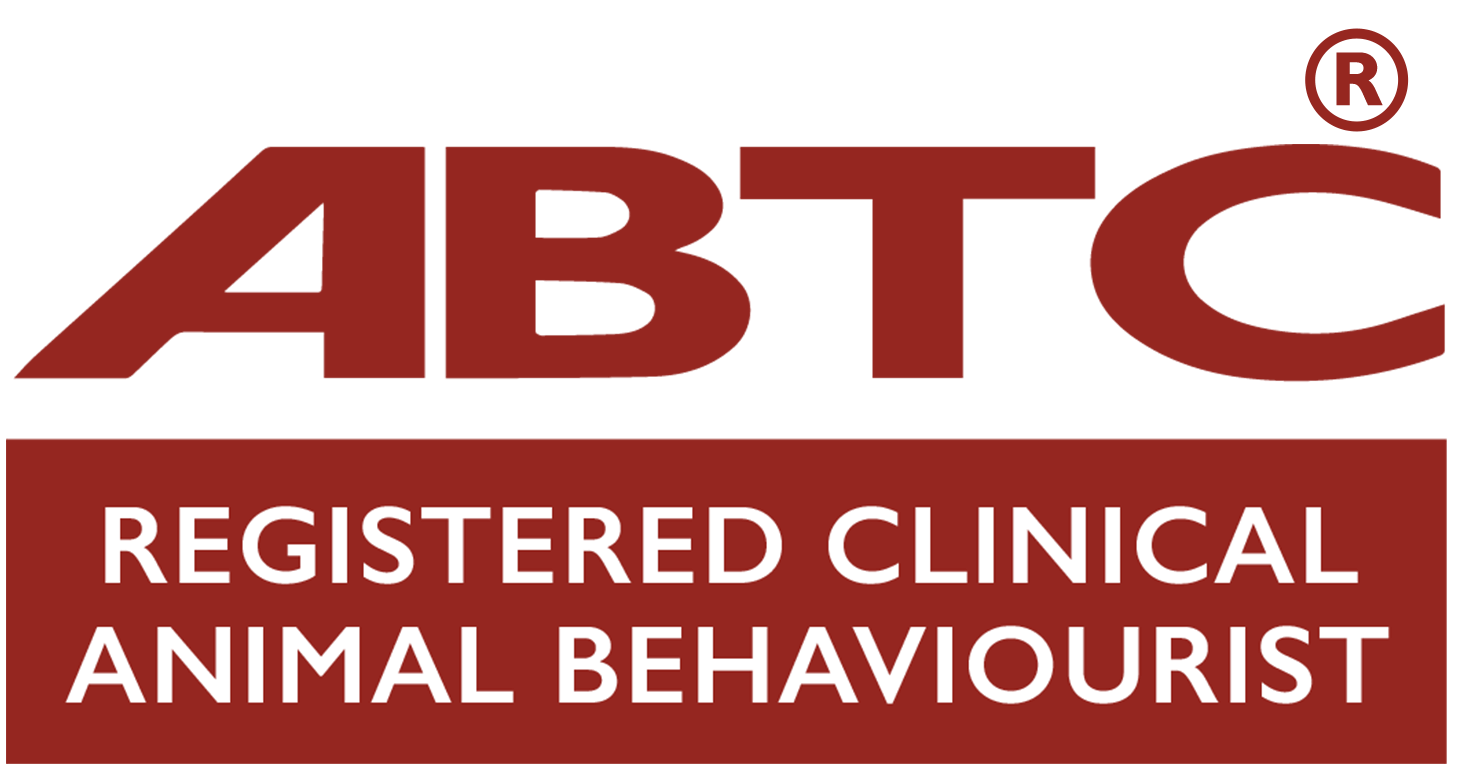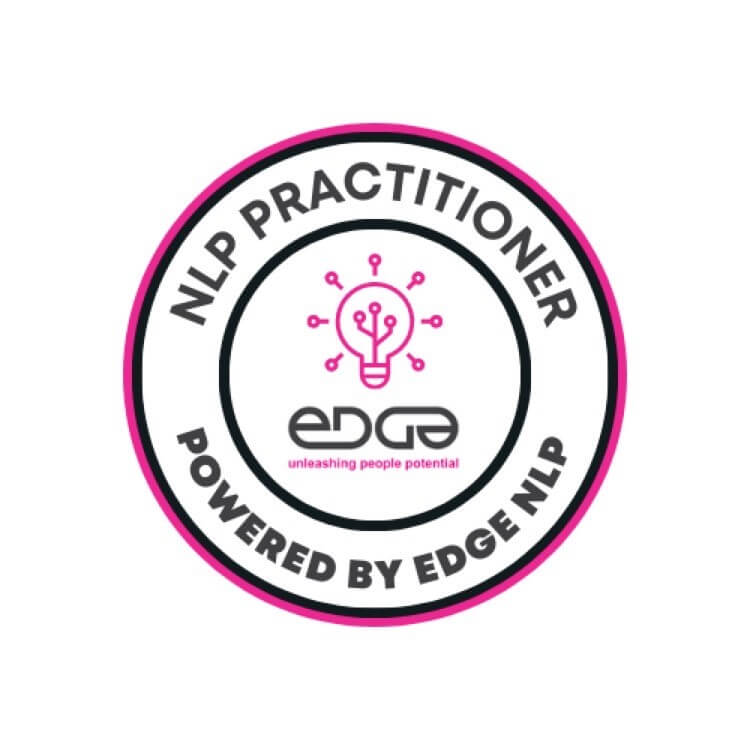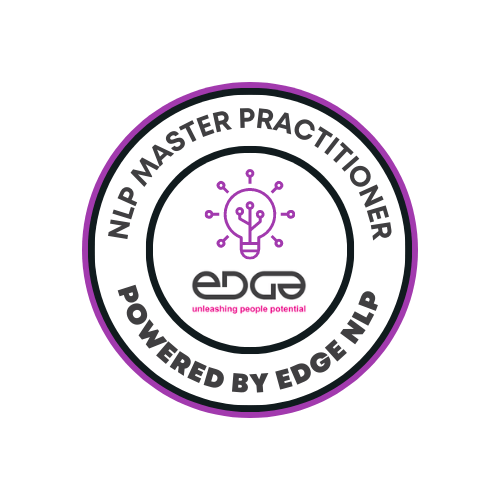“Congratulations, you’re having a baby” said the doctor, confirming the results that the little pregnancy stick had revealed just a few days earlier. It was 28th December 2012. A wide range of emotions came to the fore as I suddenly I found myself saying aloud ”but what about the dog?”
Over the last sixteen years I’ve had the pleasure of helping many clients prepare their ‘fur-child’ for the arrival of their human baby, and gone on to have more children myself.
Life with a newborn is unpredictable; it has many, many highs and can have some lows thanks to sleep deprivation and hormones to name a few. So what impact, if any, does having a baby have on our relationship with Fido?
To answer this question I conducted a pilot study in 2014. Over 40 new parents were surveyed and, although this was a small sample group, the results indicated that the relationship does alter (to varying degrees) once that bundle of joy appears.
In short, the findings showed that while owners maintained a bond with their pet, nearly half of the respondents at 48% felt they now had less time for their dog. Keeping the newborn safe was the primary concern for all, however only 27% of those polled had put measures in place to actually prepare their dog for the baby’s arrival. Meanwhile, over 50% of respondents said they wanted to ensure their dog and baby bond.
In 2018, I furthered my research for my MSc thesis which involved a larger sample (n= 342) to explore the owner-dog relationship pre- and post-partum. This produced some fascinating insights: significant differences were found in the time expectant and post-partum parents spent interacting with their dog, as well as alterations in attachment post-partum. For example, new parents spent less time interacting with the family dog (e.g. walking and playing – with some dogs walked just once a week post-partum). Many owners also reported observable changes in their dog’s behaviour during pregnancy and after, such as over-grooming, increased vocalisations and other protective-type behaviours, whilst some dogs were reported to retreat from the area when the baby cried. The study also looked at whether dog-baby preparedness could be a predictor for problem behaviours, as well as the types of activities owners did as part of any ‘baby-prep’. Most owners did some sort of prep – the most common activities included putting up a baby gate or leaving out baby products; and 29% of owners did no form of dog-baby prep. Overall, few owners sought advice from credible sources such as their veterinary surgeon (8%) and certified trainers/behaviourists (4%) – most either used the internet or friends and family for guidance. And, over half of the respondents expressed guilt about the lack of attention their dog received. Now, whilst there were limitations with this study, this research highlights the need for better support for those owners expecting and for dog-owning new parents – my plan is to continue to build upon this important area of study.
So how do you baby-proof your pooch – and – nurture that all important bond?
Preparation is the key. You can help get your dog ready for change before the baby arrives, and then foster the relationship once baby is home. While this is by no means an exhaustive list, see below for some handy hints.
- Management and control. If you plan to make changes where your dog can and cannot go then baby gates are a useful way of managing and controlling your environment. They enable Fido to see what’s going on, feel involved yet maintain his personal space. Install gates before baby arrives so your dog can get used to them being around and not having ready access to all areas.
- Create a dog ‘chill out’ zone. Babies (and toddlers) bring with them a hive of activity. It’s important your dog has a place where he can choose to go to that’s away from the goings-on. Help your dog love this area before baby comes by creating positive association with it. Feed your dog’s meals, play and train in that area. And allow your dog to become a ‘Kong addict’. This means providing food puzzle toys whenever your dog is in his chill out place. Toys like these can help promote the release of ‘happy hormones’ as your dog licks and chews the food toy; if you freeze the stuffed Kong, it’ll also keep Fido busy for longer.
- Start varying your routine. Juggling the demands of a newborn can be a challenge and this can impact the regular walks that our dog may be used to. Before baby arrives, slowly start to change the times you walk your dog, then start to vary the length of walks too so they become less predictable. Make these walks more interesting for your dog by taking him to new places, that way he can enjoy investigating new smells.
- Provide enrichment. While physical exercise is important so is mental stimulation. For example, teach your dog names for his toys, then progress to playing hide and seek games with these – asking your dog to find his toy[s] by name. Other easy to do ideas include scattering your dog’s kibble across the back garden for him to search out, or training new tricks to help bust some neurons. This helps prepare Fido for those days when his regular walk may not be possible but game play is achievable.
- Accustom your dog’s senses. Babies are noisy, smell interesting and can look scary with their wide eyes and flailing arms and legs. Help your dog become adjusted to all that baby brings by purchasing your baby lotions and potions prior to your child’s arrival so he can get accustomed to the strong smells. Purchase a Sound Effects CD or download the sounds of baby cries; play these at a very low volume setting while you distract your dog with play, meal times or training tricks. Take a systematic approach with this and only increase the volume a fraction when your dog is reliably responding to your interactions and doesn’t appear to pay any attention to the sounds. Keep these sessions short and repeat several times a day. The goal is to make this an enjoyable experience for your dog. You may also want to consider borrowing a toy baby (life size) or buy one, so you can get your dog used to seeing you carry it around. While it may seem a little silly to start with, holding something that looks realistically like a baby can give you an indication of how your dog might behave. Praise and reward your dog with a tasty treat for any calm interactions with you and the toy baby, such as a quick gentle sniff of the toy baby’s feet or when the dog settles down while you are holding the toy.
- Be honest with yourself – sort out any issues before baby arrives. If, for example, you have a dog that jumps up a lot, pulls on the leash, or gets highly aroused when visitors arrive, don’t wait until baby comes to then sort out the issue[s]. Enlist the help of a certified trainer who can help set you and your dog up for success.
Now baby’s home…
Congratulations, your little bundle of joy has arrived! Here are some tips you may want to consider now your baby is here.
- Clan odour. Every household has their own ‘clan odour’. Hence why pets will often lick or rub against us when we return home to refresh the smell; that’s because the scenting molecules dissipate over time. If we smell familiar to our pet it provides comfort and security. So, introduce your baby’s scent to your dog before the little one comes home. Ask a family member to bring something home that smells of the baby. Place the item, for example a blanket, on your lap and allow your dog to gently sniff the item. Praise and reward your dog for any signs of calmness around this item.
- Make time for your dog when you come home. Most new parents are understandably nervous when it comes to that first journey in the car to come home and may feel flustered. Avoid rushing any dog-baby introductions if you’re feeling at all anxious. The goal is to make any interactions between your dog and baby pleasurable for all. Consider asking a family member that your dog knows well to bring in the baby for you. This enables you to come into the house and say hello to your dog. Promote calmness by keeping your tone of voice soft and give your dog long, gentle strokes (if he enjoys being petted) to help Fido settle down quickly. Pop your dog into another room while the person brings the baby into the house, so they can enter without the dog being involved. Once the baby is settled, ensure you have plenty of yummy treats to hand then bring your dog into that area; you can be as controlled as having the dog on the lead, then praise and reward for calmness. If your dog shows any signs of arousal then without fuss, encourage him away from that area into another room where he can settle down.
- Reinforce positive behaviours. Focus on rewarding your dog for peaceful behaviour such as settling down whenever the baby is around. Your dog will soon learn that when baby is about, lovely things happen.
- Never leave babies or children unsupervised. Set your little ones up for success; never leave your dog and baby or child[ren] alone together. Prevention is better than cure.
- Enlist the help of family, friends or a dog walker. Being a new parent can be exhausting. Do take advantage of any offers of help from family or friends; ask them to take Fido out for walks when you are unable to. If this isn’t possible, then seek the help of a professional dog walker.
- D.A.P. In conjunction to your dog’s chill out zone and positive reinforcement of calm behaviour, dog appeasing pheromones (DAP) can help promote a sense of well-being. Available in the form of a spray, plug-in or pet collar, DAP releases ‘appeasing’ pheromones that mimic those given off from a lactating female, a function designed to reassure her offspring. Place the DAP in your dog’s chill out area or where he spends the majority of time.
- Make the most of ‘downtime’. When the baby is sleeping and you have a little downtime, use this as an opportunity to interact with your pooch; whether that’s a gentle brush, a loving tummy rub or having a little game, whatever your dog finds pleasurable – and it’s a great stress reliever for you too.
- Role model the behaviours you want. Babies are like little sponges, soaking up all the information that’s happening around them. Be aware of how you behave with your dog as your baby will mimic this. For example, my toddler has never seen me walk up to my dog while he rests on his bed, nor has she seen me put my face close to his. She has only ever seen me call the dog and praise him with gentle strokes. This means my dog has a choice, and it reduces the imitation of behaviour that could, unwittingly, set your little one and dog up to fail.
- Learn to recognise the early warning signs. Dogs communicate all the time through a number of non-verbal communications. While we cannot appreciate the nose of our pooch, we can learn to recognise the signs that the dog is feeling relaxed and comfortable or anxious and stressed. There are some great free online resources to help you learn more about dog body language as well as top tips for parents such as the ASPCA and Family Paws. Alternatively, come to one of our Body Language workshops which run throughout the year.
And finally…
Numerous studies have revealed the benefits of children growing up with pets from building greater resistance to illness (such as asthma) to helping reduce the stresses of school.
So as your baby grows, there are many ways you can help create that all important dog-child bond while keeping one another safe; from your little one reading to the dog, asking him to do simple exercises like a ‘sit’ to managed playtime.
With patience, calmness and management, you will be able to create a long-lasting relationship where your child can become your dog’s best friend.
For inspiration read Playing With Your Dog which includes a chapter on ensuring playtime stays safe. Keep a look out for Hanne’s forthcoming book all about baby proofing your pooch.
Photos: Copyright of Hanne Grice.
Learn more about our classes

Get Hanne's Book
Playing With Your Dog will help any dog owner work out the games that are best suited for their pet to play throughout his life, from puppyhood to old age. The book also shares some tricks for all ages, group activities, and recommended toys that dogs will enjoy.


